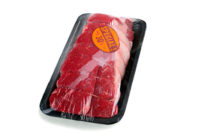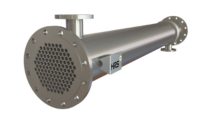
By Jim Oetinger, Paratherm Corp., courtesy of Process Heating
There is sometimes a fine line between heat-transfer oil and lubricating oil product lines. Beyond being slippery, lube oils and heat-transfer oils have little else in common as they are formulated for very different functions. Engineers familiar with lube oils may be confused about the two. One way to determine a fluid’s function is to check its product data sheet: certain terms and test results are more common to lube oils than heat-transfer oils. Terms that typically will be found on a lube oil’s data sheet include:
Viscosity Index. Most lube oils are formulated for as little change in the viscosity as possible. By contrast, for heat-transfer fluids, you want as much viscosity change as you can get. But is a high number better than a low number? And what is the viscosity at a given temperature?
SAE Grade/ISO Grade. These are general lubricating terms, where the lower the number, the lower the viscosity. Typically, these terms are used by a manufacturer for distinguishing between two product grades. While it may work for car oil, the SAE/ISO grade provides no data useable for either selecting an oil or designing a system.
Saybolt Universal Seconds (SUS). This is a viscosity unit that makes sense only to lubrication types. Heat transfer oils use centistokes, centipoises or lb/ft-hr for selecting pumps and sizing heat exchangers.
Copper Corrosion. Copper is seldom used in heat- transfer systems, so why worry about it corroding?
Resistance to Water/Non-foaming/De-emulsibility. Only lube oils retain water long enough to cause system corrosion or foam. Anybody who has seen a geyser of thermal fluid coming out of an expansion tank vent knows that water does not typically hang around a thermal fluid system for long. It converts to steam and forces an equivalent volume of liquid out of the system.
Conradsen Carbon Residue/Ramsbottom Carbon Residue/Carbon Residue (Micro Method). These tests determine how much solid material remains after a sample has been completely evaporated and then pyrolized at high temperatures while exposed to air. While theoretically an indication of the tendency of an oil to form deposits, it really is a measure of the amount of inorganic additives because the pyrolysis step destroys most of the carbon in the residue.
So, when reviewing product literature, keep a look out for some of these claims and properties. If these terms are used liberally, it is a good indicator that the product is not formulated exclusively for heat transfer.
This story originally appeared on the Web site for Process Heating, a BNP Media publication. For more information, go to Process Heating.
Jim Oetinger is director of technology with Paratherm Corp., which manufactures heat-transfer fluids, and supports their use with comprehensive fluid- and system-maintenance assistance.





Report Abusive Comment